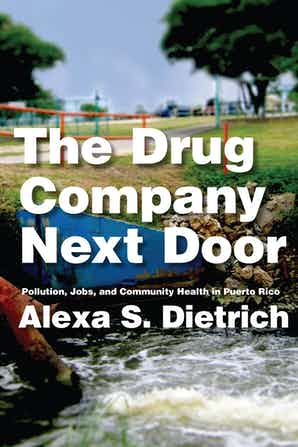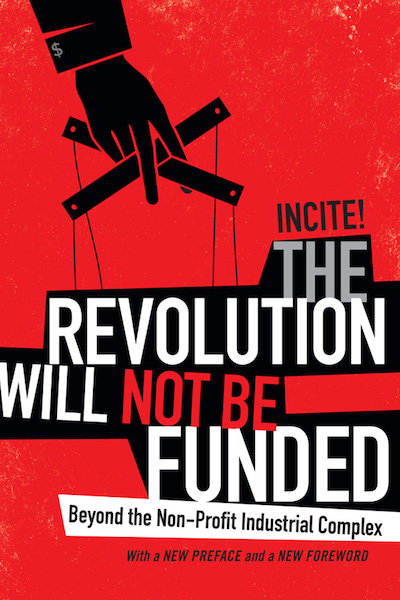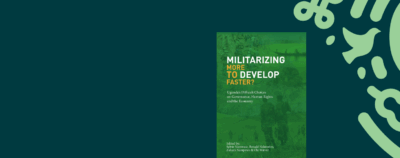The Covid-19 pandemic has provoked a number of politically vital questions regarding local solidarities across national lines in times of crises, or what is referred to as internationalism. In particular, what is the relationship between intersectionality1Kimberlé Crenshaw, “Intersectionality Matters: A Conversation with Kimberlé Crenshaw,” interview by Janine Jackson, Haymarket Books, May 5, 2020. and internationalism?2Angela Y. Davis, Freedom Is a Constant Struggle: Ferguson, Palestine, and the Foundations of a Movement, ed. Frank Barat (Chicago: Haymarket Books, 2015), 18–19, 53. What lessons can we draw from the histories of HIV/AIDS to make sense of how structural abandonment and pandemic profiteering shape the praxes of intersectionality and internationalism in the contemporary moment? To understand the confluence between HIV/AIDS and Covid-19, we turn to Marlon Bailey’s concept of “intraventions,” which he defines as public health actions “conducted and sustained through practices and processes within at-risk communities themselves,” as a model for how to develop self-organized networks of community prevention, treatment, and care in the contexts of the Covid-19 pandemic and the ongoing crises of racist police violence.3Marlon M. Bailey, “Performance as Intravention: Ballroom Culture and the Politics of HIV/AIDS in Detroit,” Souls 11, no. 3 (2009): 255.
These praxes of intravention are important tools with which to rebuke dominant frameworks of analysis that overly invest in privatized biomedical solutions like antivirals and vaccines. As capital rich nations rush to fund research and distribute vaccines, leaders from capital poor nations, such as South Africa’s President Cyril Ramaphosa, demand that nations such as Canada, Japan, and members of the European Union stop hoarding the vaccine supply. Leading researchers and public health policy experts, like Dr. Mohga Kamal-Yanni, are calling upon wealthy nations and their privately owned pharmaceutical corporate partners to dismantle the vaccine monopoly and share the technology by contributing to the global COVID-19 Technology Access Pool (C-TAP).
“While vaccinations will help mitigate the spread of Covid-19, without adequately caring for the most vulnerable populations and sharing resources, the vaccines are sure to also reinforce socioeconomic divisions on local and global scales.”The history of HIV/AIDS teaches us that these biotechnologies will not be widely available to vulnerable populations for years to come, if ever.4→Geoffrey York, “COVID-19 vaccine supplies for Africa dwindling as Moderna opts out,” The Globe and Mail, January 3, 2021.
→Yara Hawari, “The dark side of Israel’s vaccine success story,” Al Jazeera, January 11, 2021. For decades following the development of effective HIV/AIDS medications, companies like Pfizer refused to release their patents so as to protect their profits in affluent countries, effectively leaving millions of people without access to these lifesaving medications. It is also worth noting here that pharmaceutical production is a heavily polluting industry that is deeply ingrained in the politics of environmental racism and neocolonialism.5 New York: NYU Press, 2013More Info → While vaccinations will help mitigate the spread of Covid-19, without adequately caring for the most vulnerable populations and sharing resources, the vaccines are sure to also reinforce socioeconomic divisions on local and global scales. We argue that queer and trans Black, Indigenous, and people of color (QTBIPOC) coalitional politics exemplify intraventions that are both intersectional and internationalist, and are at the core of successful community public health.
New York: NYU Press, 2013More Info → While vaccinations will help mitigate the spread of Covid-19, without adequately caring for the most vulnerable populations and sharing resources, the vaccines are sure to also reinforce socioeconomic divisions on local and global scales. We argue that queer and trans Black, Indigenous, and people of color (QTBIPOC) coalitional politics exemplify intraventions that are both intersectional and internationalist, and are at the core of successful community public health.
The formalization of the AIDS social movement and the ongoing need for intraventions
As with HIV/AIDS, since the late twentieth-century, today’s focus on biomedical solutions for the Covid-19 pandemic incites global technoscientific, political, and economic competition rather than cooperation between nation-states. At the height of the AIDS crisis, AIDS activism gave rise to a network of grassroots movements that we may loosely refer to as the “AIDS social movement.” This included organizations for and by QTBIPOC, whose structural vulnerabilities, needs, and solutions for abating the AIDS pandemic remained marginal to the dominant medical approaches of the time. For example, through the work of numerous affinity groups within the AIDS Coalition to Unleash Power (ACT UP), AIDS activists sustained an intersectional movement that called for the expansion of public housing (as opposed to shelters) for the poor, the inclusion of women and people of color in clinical trials, and universal healthcare in order to address the structural factors that increase marginalized people’s risk of infection, illness, and premature death.6Ruth Wilson Gilmore, Golden Gulag: Prisons, Surplus, Crisis, and Opposition in Globalizing California (Oakland, CA: University of California Press, 2006), 28. In 1991, in response to the start of the first Gulf War, ACT UP organized a “Day of Desperation” protest where they took over Grand Central Station in New York and demanded “money for AIDS, not war” and “fight AIDS, not Arabs,” which were unequivocal expressions of their internationalist and antiwar politics.
Yet, as this coalition of affinity groups and grassroots organizations worked more closely with state and privately funded sources, their representations and leadership increasingly centered those with access to these very institutions.7Catherine Saalfield and Ray Navarro, “Shocking Pink Praxis: Race and Gender on the ACT UP Frontlines,” in Inside/Out: Lesbian Theories, Gay Theories, ed. Diana Fuss (Routledge, 1991), 341–370. This was particularly the case with regards to ACT UP-New York City’s treatment and data committee whose work with the Centers for Disease Control and Prevention, the National Institutes of Health, and drug companies was momentous yet largely led and historically represented by white men. What has resulted is the narrowing focus on serving the more visible communities with access to biomedical interventions rather than dismantling the systems that have disenfranchised working-class and poor people who remain invisible and unable to access healthcare and treatment. Under these circumstances, “progress” can only be measured by the number of people who do or do not gain access and adhere to privatized biomedical interventions, rather than de-privatizing biotechnologies and dismantling the monopoly over their distributions. Instead of sustaining opportunities for coalition-building across race, gender, class, sexuality, ability, and nationality, these once-grassroots organizations have since developed into nonprofit AIDS or health service corporations that leverage data to compete for government and/or private funding.8 Durham, NC: Duke University Press, 2017More Info → HIV/AIDS organizations must collect and produce data to demonstrate “risk” and need. This data is always hardest to leverage on behalf of women of color and trans people of color because their numbers and rates seemingly remain smaller in scale.
Durham, NC: Duke University Press, 2017More Info → HIV/AIDS organizations must collect and produce data to demonstrate “risk” and need. This data is always hardest to leverage on behalf of women of color and trans people of color because their numbers and rates seemingly remain smaller in scale.
To address the growing divide between increasingly mainstream HIV/AIDS nonprofits and the communities they once served, Marlon Bailey proposes the concept of “intravention,” describing practices of HIV/AIDS prevention, treatment, and care developed in ballroom communities led by queer and trans people of color. These performance competitions and alternative kinship structures help to sustain members’ self-esteem and sense of community belonging. They are also spaces to access information on how to navigate the challenges and dangers of biomedical interventions, such as injection hormone therapy. These systems of support are crucial for adherence to prevention, treatment, and collectivized care practices. Bailey proposes this concept in contrast to the state models of HIV intervention, which all too often follow a top-down approach that dismisses the context-specific factors that contribute to increased risk for BIPOC as well as migrant, working-class, poor, and unhoused communities. These failures of state public health initiatives are not unique to HIV prevention. Rather, their discriminatory logics are symptomatic of a broader institutional approach that disregards local knowledge and stigmatizes already marginalized peoples, further exacerbating disastrous health outcomes.
Building off of Bailey’s theorizations, we argue that the context-specific practices of intravention exist within all marginalized communities facing systemic health problems, and it is the work of public health experts to identify the contexts and nurture the environment in which these practices exist and provide the resources to strengthen them. This includes supporting efforts to defund police, allocating resources for community health and safety, and abolishing prisons in order to adequately expand housing and healthcare. We turn toward the Black Lives Matter movements’ responses to Covid-19 to exemplify how localized practices of intersectional intraventions have the potential to transform our conditions on an international scale.
Pandemics, structural racism, and Black Lives Matter
In the midst of a growing public health crisis that severely limited people’s ability to congregate safely, the summer of 2020 saw the largest protests in US history against racist police violence, which were led by a Black feminist and queer coalitional movement that has coalesced under the banners of Black Lives Matter (BLM) and the Movement for Black Lives. While drawing crucial attention to police violence in the United States, these protests have linked the violence of the state toward Black and Brown people to its apathy toward the well-being of these same communities in the form of weak social safety nets and, in the context of Covid-19 and lack of services and supplies (such as PPE) for workers mostly comprised by poor Black and Brown workers. By addressing the systems that render Black people the most vulnerable to both police violence and Covid-19, these movements take an intersectional, internationalist approach to dismantling structural violence (including policing institutions) and utilizing their resources to demand universal housing and healthcare, echoing early HIV/AIDS activists, and structures supportive of interpersonal care. It is vitally necessary to center queer and trans BIPOC community members in public health intraventions, since they are most often relegated to the margins, even within their own marginalized communities. While scholars and public health activists have previously noted the crucial role of revolutionary organizations such as the Black Panthers and the Young Lords Party in inspiring and performing this type of community care,9Alondra Nelson, “The Longue Durée of Black Lives Matter,” American Journal of Public Health 106, no. 10 (2016): 1734–1737. the intersectional and internationalist nature of the Movement for Black Lives brings this deep, community-based, public health work into the twenty-first century.
Black Lives Matter performs acts of intravention that involve social media platforms, on-the-ground actions, and building noninstitutional networks. Organized rallies and street marches rely on low-tech strategies of mutual care. For example, protestors are encouraged to wear masks, and essential supplies are distributed for free—such as masks, water, sandwiches, hand sanitizer, protective gear against tear gas, and medical treatment. As health experts have argued, BLM rallies are careful to stage their public and intimate gatherings by actively preventing viral spread. These actions provide a viable model of intravention for how to enact collective intimacy, mourning, and outrage in public spaces. These practices stand in stark contrast to Trump’s campaign rallies in the Fall of 2020, which intentionally disregarded public health guidelines and undoubtedly led to increased infections and deaths.
“The Movement for Black Lives adapts social media platforms that are otherwise commercial to perform intraventions for those who are structurally abandoned.”BLM’s intraventions are world-making praxes in that they envision a more just future by enacting it in the present. Activists harness social media to challenge the anti-Blackness and misinformation of mainstream news while organizing and amplifying support for Black feminist- and queer-directed media and mutual aid projects. They organize fundraisers to cover the costs of bail for arrested protesters and for the surviving families of those whose lives have been claimed by police violence. Those who cannot attend or participate in actions can use social media to signal boost #DefundPolice, #CareNotCops, #SayHerName. The Movement for Black Lives adapts social media platforms that are otherwise commercial to perform intraventions for those who are structurally abandoned. While initially the focus of this summer’s protests centered on the police murder of George Floyd, the calls for justice also honor the names of Breonna Taylor, Tony McDade, Nina Pop, and other Black women, queer, and trans people.
Beyond US borders, BLM protests and marches have called attention to the many Black and Brown lives cut short by racist policing and US military imperialism. This has renewed the internationalist demand for global demilitarization and environmental justice. The transnationalization of this movement has led to the widespread use of organizing tactics that have forced nation-states to face their own anti-Black racism and police repression while generating models and networks for coalition and support. The Movement for Black Lives has inspired European groups, such as All Black Lives in the United Kingdom, and resonated with anticolonial organizations in Africa, such as the South Africa-based #AfricaNoFilter. BLM has been a touchstone for strengthening solidarities between Black and Palestinian liberation, calling into question the relationship between US domestic policing and the US-backed support for Israel’s apartheid and military occupation. These forms of internationalist intravention prepare us to ideologically and physically counter increases in US fascism (as exemplified by rise and pervasive influence of Donald Trump) and militarism, here and abroad, while caring for one another’s emotional and physical health. As we adapt these intraventions, we must keep Black women, trans, and queer people at the center of these practices. The growing global reach of Black Lives Matter is a testament to its influential vision for creating a new and just world.
Banner photo: Steve Eason/Flickr.
References:
→Yara Hawari, “The dark side of Israel’s vaccine success story,” Al Jazeera, January 11, 2021.














